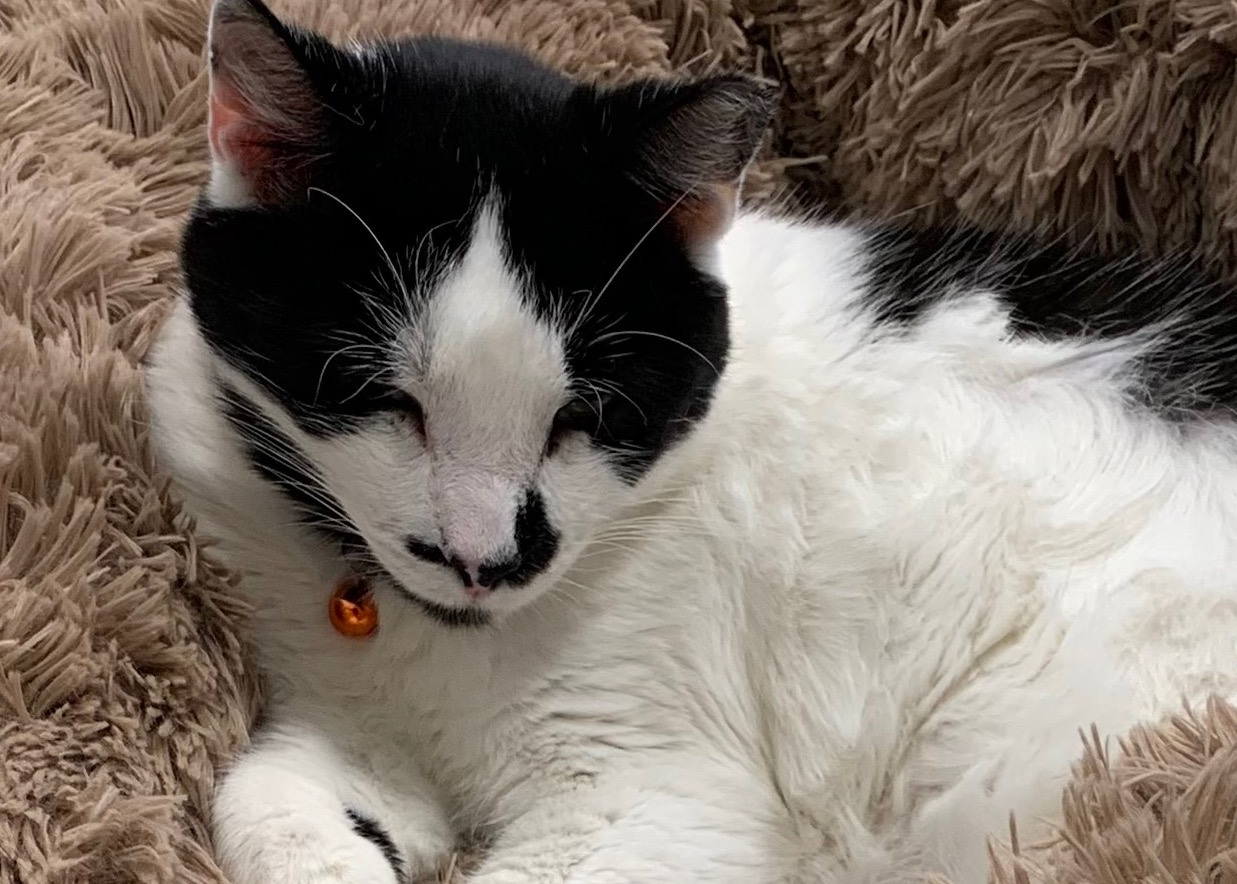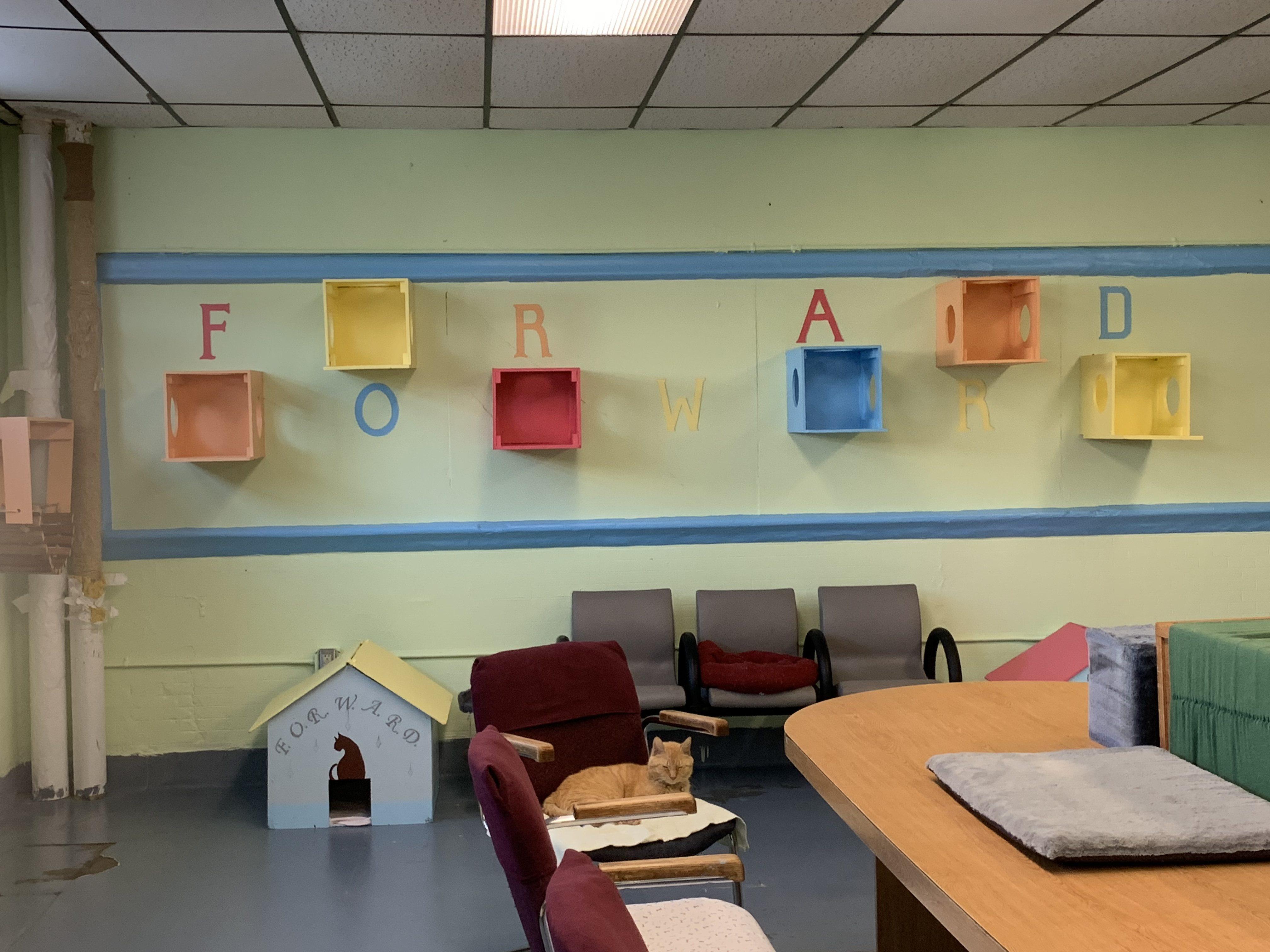
Helping At-Risk Cats—and Incarcerated People
Getty/undefined undefined
Time with our feline friends can be deeply nourishing. Explore how one program is connecting shelter cats with incarcerated individuals to promote interspecies healing.
“Time spent with cats is never wasted,” proclaims a meme on my social feed. Accompanied by an adorable kitten photo, the quote is attributed to Sigmund Freud. Amusingly, I’ve also seen the phrase credited to Albert Einstein. And I suspect somewhere it’s also linked to the Buddha, like all sage advice on the internet. Regardless of all the unsubstantiated attributions, the wisdom is nonetheless verified by anyone who lives with a cat.
Worldwide, we humans shower love on more than 370 million pet cats. At the same time, almost one million felines are euthanized in shelters each year. In fact, Best Friends Animal Society, the largest no-kill animal sanctuary in the U.S., reports that more than twice as many cats die in shelters than dogs.
As a result, many cities now advocate for Trap-Neuter-Return (TNR) programs that support free-roaming cat communities while taking action to curb “overpopulation,” reduce abandoned litters of kittens, and stop the spread of diseases for which we have widely-available vaccines.
Meanwhile, shelters look for creative ways to solve the challenges of cats deemed unadoptable due to their behavior or health challenges. One striking example takes place at Pendleton Correctional Facility, a medium-maximum security prison in Indianapolis, IN. Through the Feline and Offenders Rehabilitation with Affection, Reformation, and Dedication (F.O.R.W.A.R.D.) program, shelter cats and incarcerated individuals develop meaningful relationships that increase adoption success for animals and life success for humans.
I recently asked their team a few of my most curious questions about the program.
Sarah Bowen: What inspired the F.O.R.W.A.R.D. program?
F.O.R.W.A.R.D.: The inspiration came from Michelle Rains, who is an amazingly awesome person. In 2015, the Animal Protection League (APL) in Anderson, Indiana, was overwhelmed, and Michelle thought it would be a win-win for both the cats and incarcerated individuals―and it certainly was.
Fast forward to today, and we are so grateful and humbled to have been nationally recognized by the ASPCA with the 2022 Cat Advocate of the Year Award. Since the program began, more than 60 cats and kittens have spent time at the facility, and many were later adopted thanks to the love and socialization they received. We look forward to continuing to witness the growth of both the cats and the incarcerated individuals and hope this work will inspire others, as there are so many animals that need our help.
How are cats chosen to participate in the program? What about the humans?
Cats who may need extra care and attention are suggested by the APL. Most of the time, we go to the shelter and walk through to see which cats interact with us and which will not, and we take a couple of each to our sanctuary. We have learned that interactive cats can provide emotional support and confidence to other cats to help bring them out of their shell.

The requirements for the incarcerated individual who cares for the cats are as follows:
Must be job eligible
Must be in Credit Class 1
Must not have a history of animal abuse
Must have 4 years clear of violent offenses
Must be assigned to general population
Must be level 3 or 4 classification
The incarcerated individuals must also pass being around the cats. To begin, they first come to the sanctuary and spend time around the cats to see how they interact with one another, which is a big part of allowing them to work at the sanctuary.
What does a typical day look like for the cats and people within the prison sanctuary?
First thing every morning, the sanctuary is cleaned. Breakfast is then served, and during this time, most cats are lazing around―with the exception of a few self-proclaimed quality assurance monitoring cats, who follow the workers closely to ensure things are being done properly! Once the cleaning is done, the cats are given one-on-one attention, such as lap sitting and grooming, to encourage socialization.

The program features three values within its name: affection, reformation, and dedication. Why these three?
To have dedication, you must have affection. When you have both, it allows for the reformation of all parties to take place, which is the goal of the program.
Can you share one or two of your favorite amusing moments from the program?
The cats love their snacks. If you grab a bag of snacks and say, “It looks like rain!” they will all come running to you and wait. Then, as you start pouring snacks on the floor, all you hear is crunching and purring!
In addition to the F.O.R.W.A.R.D. program, the Animal Protection League of Indiana runs other programs, too. It seems these programs help incarcerated humans and animals support each other not only within facilities, but that the relationships sometimes continue through adoption by inmates and staff. Does the potential for adoption give these programs an advantage over equestrian prison programs? And have they been successful in encouraging adoption?
As each incarcerated individual has different interests, passions, and needs, we believe that different programs are better suited for individuals, with no program having an advantage over the other.
Whether it’s cats or horses, building animal relationships creates a lasting positive impact on the lives of the incarcerated individuals. It can also lead to the adoption of a pet, where they continue to receive care and affection and get the home they deserve.
On the flip side, I suspect it might be heartbreaking for inmates who have formed close interspecies relationships and cannot adopt when they leave the facility. So how do you handle grief over relationship loss?
While the lessons learned working at F.O.R.W.A.R.D. last a lifetime, we understand that the bonds created with the cats can be hard to let go of, regardless of how long an individual has worked at the sanctuary. So, for the incarcerated individuals who experience feelings of relationship loss, we encourage them to talk about the grief being experienced.
We hope the program inspires them to continue to engage in programs that improve animal welfare to both make a difference and reap the benefits of building animal relationships, regardless of adoption status.
[A note from Sarah: Check out this video to see the cats and hear from incarcerated caretakers about the impact of the program.]
If one of our readers wants to get involved in connecting their local shelter with a correctional facility near them, what would you recommend as a first step?
As a first step, we would encourage them to volunteer at their local shelter to gain knowledge about what goes into the care and support of these animals.
Want more ideas for supporting at-risk cats? Read “Black Cats: Reclaiming the Sacred Feline.”










